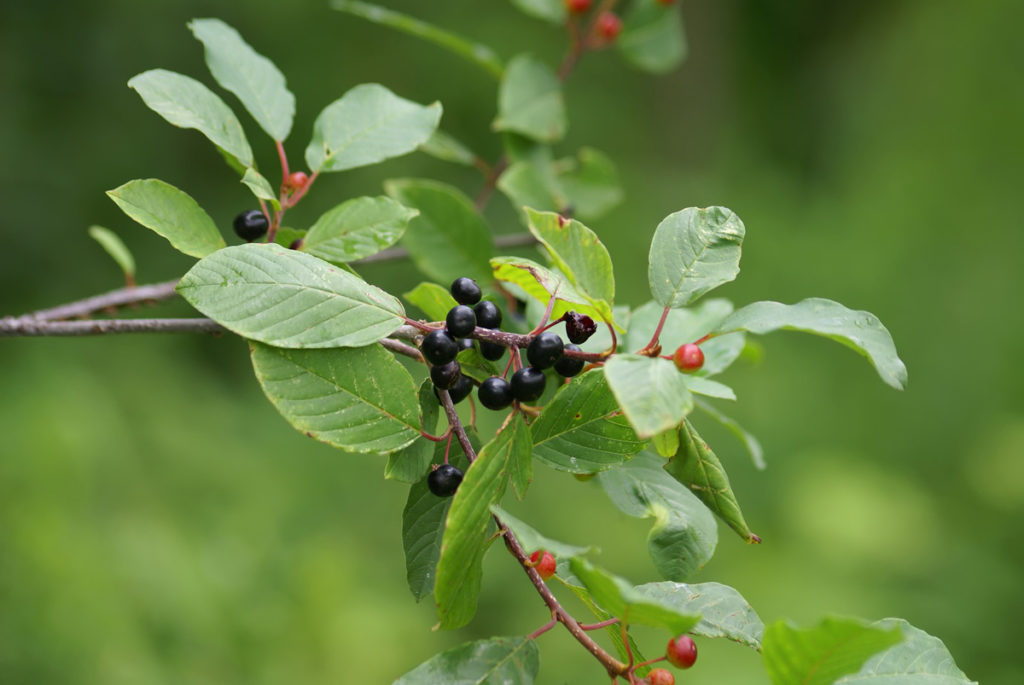(Rhamnus frangula L.)
Alder buckthorn is a shrub occurring almost throughout the entire Europe and western Asia. In Poland it is on the list of partly protected species. The healing properties of the alder buckthorn have been known and used since the Middle Ages 1,2.
In therapy, the bark of the alder buckthorn is used, collected from young trunks and branches. The main active ingredients of the raw material are anthranoid derivatives: glucofrangulin A and B, frangulin A, B and C, as well as emodin and rheochrysoidine derivatives 1,3. According to the World Health Organization (WHO) monograph, dried bark is standardized for glucofrangulin content and cannot contain less than 7% 4. Under the influence of intestinal bacteria anthranoid compounds are transformed in the large intestine into active metabolites that affect the motor function of the colon and accelerate the intestinal passage. Their activity determines the laxative effect of the alder buckthorn bark. Raw material can be used ad hoc in the treatment of mild constipation 3,5,6. It is used in the form of infusions, mixtures and extracts 7.
Herbapol Wrocław used the alder buckthorn bark in the formula of Relax syrup, which is a medicine traditionally used in constipation.
1 H. Strzelecka, J. Kowalski, Encyklopedia zielarstwa i ziołolecznictwa, wyd. nauk. PWN, Warszawa 2000, p. 257-258
2 Plants For a Future: http://www.pfaf.org (access on: 25.01.2016)
3 ESCOP Monographs, 2003, p. 169-173
4 WHO Monographs on Selected Medicinal Plants – Volume 2, 2004, p. 114-123
5 Community Herbal Monograph on Rhamnus Frangula L., cortex, European Medicines Agency, London, 26 October 2006
6 Charakterystyka Produktu Leczniczego, Rhelax syrop
7 M. Szota, Postepowanie w zaparciach, Lek w Polsce, 04/2013, p. 53-58
